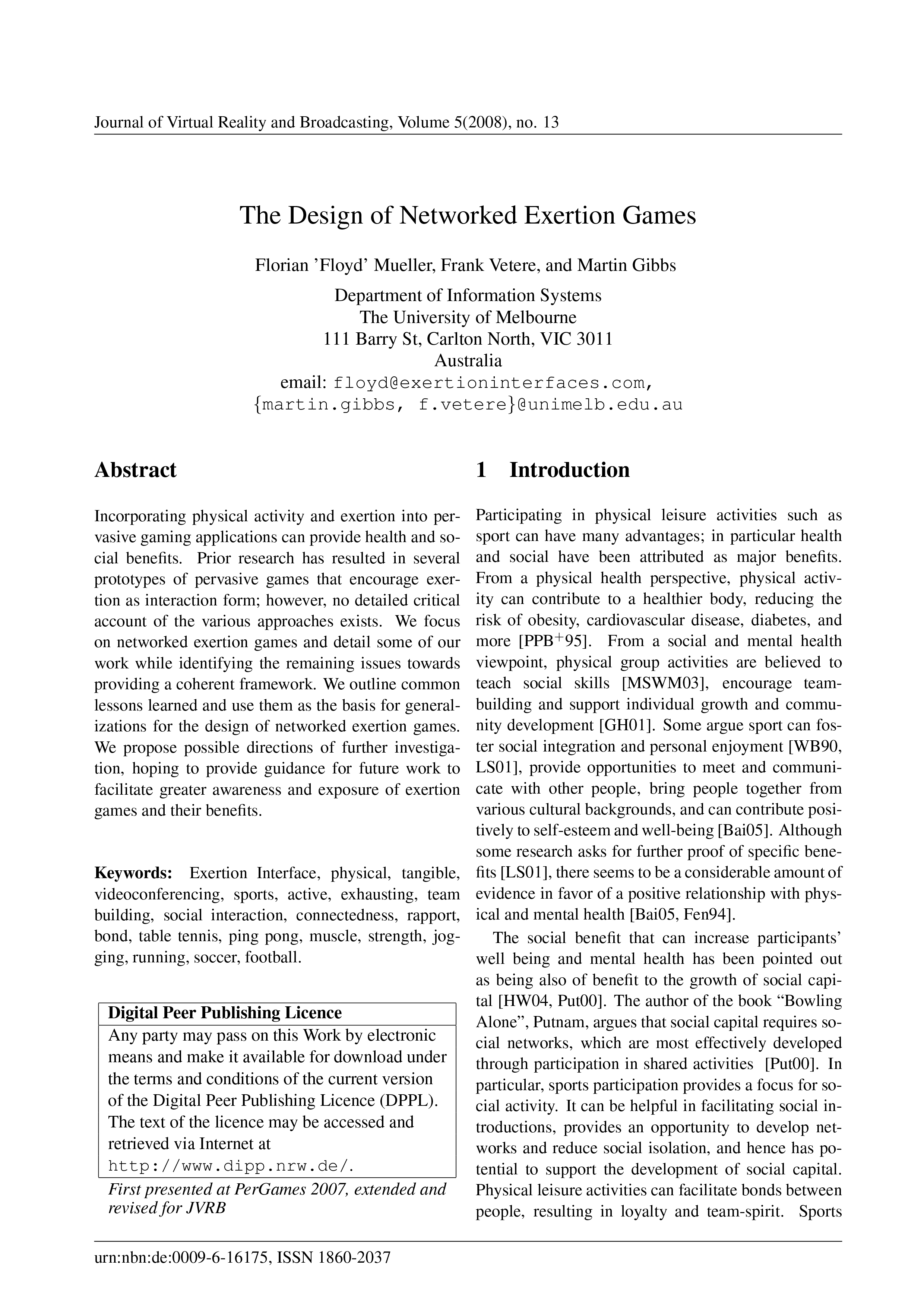The Design of Networked Exertion Games
DOI:
https://doi.org/10.20385/1860-2037/5.2008.13Keywords:
Exertion Interface, active, bond, connectedness, exhausting, football, jogging, muscle, physical, ping pong, rapport, running, soccer, social interaction, sports, strength, table tennis, tangible, team building, videoconferencingAbstract
Incorporating physical activity and exertion into pervasive gaming applications can provide health and social benefits. Prior research has resulted in several prototypes of pervasive games that encourage exertion as interaction form; however, no detailed critical account of the various approaches exists. We focus on networked exertion games and detail some of our work while identifying the remaining issues towards providing a coherent framework. We outline common lessons learned and use them as the basis for generalizations for the design of networked exertion games. We propose possible directions of further investigation, hoping to provide guidance for future work to facilitate greater awareness and exposure of exertion games and their benefits.
Published
2008-11-26
Issue
Section
PerGames 2007





